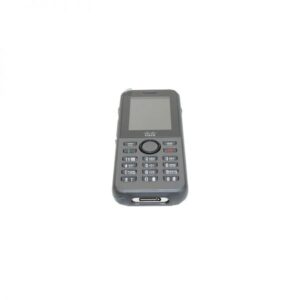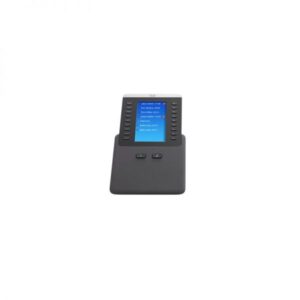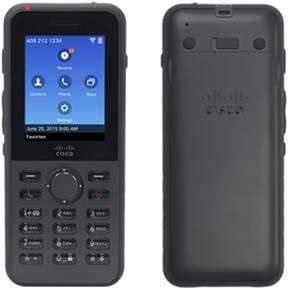|
Features |
● Six line appearances
● Abbreviated dialing
● Adjustable ringing and volume levels
● Adjustable display brightness and timeout
● Audible and vibrating ringers
● Auto-answer
● Auto-detection of headset and auto-answer from headset
● Automatic keypad lock
● Callback
● Call forward
● Call history lists
● Call park
● Call pickup
● Call timer
● Call waiting
● Caller ID
● cBarge
● Corporate directory
● Conference
● Direct transfer
● Extension mobility service
● Fast-dial service
● Group call pickup
● Hold
● Hotkey for keypad lock, ring silent mode, and voicemail access
● Immediate divert
● Join
● Last-number redial – green key
● Malicious caller
● Message-waiting indicator
● Meet-me conference
● Multilevel precedence and preemption (MLPP)
● Music on hold
● Mute
● Network profiles (4)
● OPickUp
● Personal directory
● Predialing before sending
● Presence
● Privacy
● Quality Report Tool (QRT)
● Redial
● Ring tone per line appearance
● Service URL
● Shared line
● Time and date display
● Transfer
● Network hold
● Hospitality
● Support for mutual-authentication Transport Layer Security (TLS)
● Cisco Unified Communications Manager WLAN profiles
● +Dialing
● Application launch pad
● Busy Lamp Field (BLF)
● BLF pickup
● BLF speed dial
● Call forward notification
● Forced authorization and client matter codes
● Intercom
● Mobility
● Silent monitoring and recording
● Speed dial
● Voicemail
● Whisper coaching
● Ring setting – phone active (ring, ring once, beep, flash)
● Predictive search on new call
|
|
Buttons |
● Power button
● Volume up/down
● Two soft-key buttons to access screen-based applications, features, and functions
● Green key (answer/send/redial) and red key (power/end call)
● Application button
● Mute
● Speakerphone
● Five-way navigation support
● Numeric keypad (0–9, *, &, #)
|
|
Codecs |
● G.711a, G.711u
● G.729a, G.729ab
● G.722
● Internet Low Bitrate Codec (iLBC) audio-compression codecs
● iSAC
|
|
LEDs |
● Ring, message waiting, Wi-Fi status, and charging LEDs
|
|
Protocol |
● Session Initiation Protocol (SIP)
|
|
Call control |
● Cisco Unified Communications Manager: 9.1(2), 10.5(2), 11.0(1), and later
● Cisco Unified Survivable Remote Site Telephony (SRST): 10.5, 11.0, 11.5, 11.7, and later
● Cisco Unified Communications Manager Express: 10.5, 11.0, 11.5, 11.7 (native support), and later
● Cisco Hosted Collaboration Solution (HCS): 9.x, 10.x, 11.x, and later
|
|
Security features |
● Certificates
● Image authentication
● Device authentication
● File authentication
● Signaling authentication
● Secure Cisco Unified SRST
● Media encryption using Secure Real-Time Protocol (SRTP)
● Signaling encryption using TLS Protocol
● Certificate Authority Proxy Function (CAPF)
● Simple Certificate Enrollment Protocol support (SCEP) for certificate renewal
● Secure profiles
● Encrypted configuration files
● Cryptography is not enabled by default and may be enabled only through a cryptographically enabled Cisco Unified Communications Manager
|
|
Provisioning and management |
● Configuration via Cisco Unified Communications Manager, SRST, and Unified Communications Manager Express administration interfaces
● Bulk provisioning support via desktop charger and USB to Ethernet dongle combination
● Web server for configuration and statistics
● Capability to disable local phone settings
● QoS reporting: Jitter, delay, dropped packets, and latency on a per-call basis
● Real Time Control Protocol (RTCP) support and monitoring
● Syslog
|
|
Configuration options |
● Dynamic Host Configuration Protocol (DHCP) client or static configuration
● Support for online firmware upgrades using Trivial File Transfer Protocol (TFTP)
● Domain Name System (DNS)
|
|
Application framework |
● XML (support push-to-talk, paging, and other 3 rd party applications)
|
|
Protocols |
● IEEE 802.11a, 802.11b, 802.11g, 802.11n, 802.11ac
|
||||||||||||||||






